Fiona J Gilbert
Rician Denoising Diffusion Probabilistic Models For Sodium Breast MRI Enhancement
Oct 15, 2024
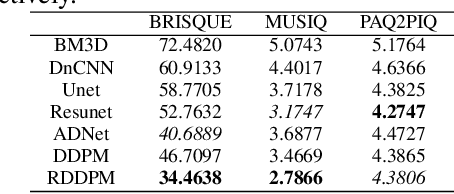
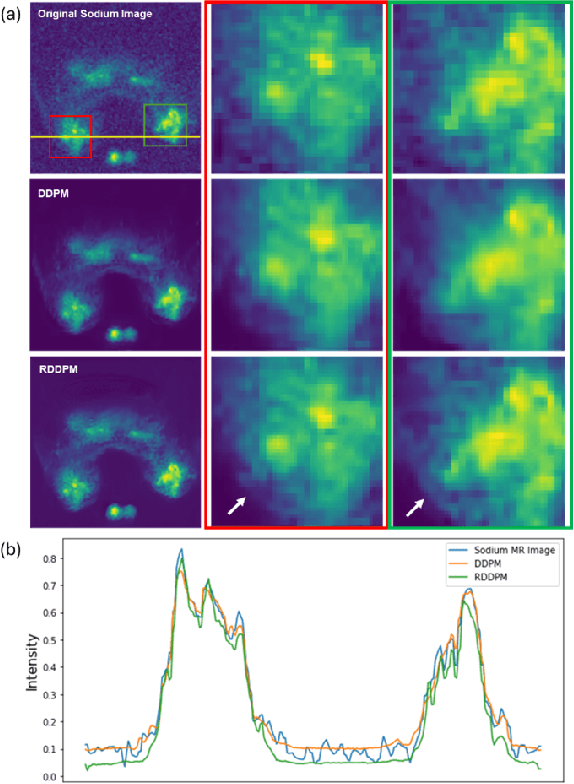
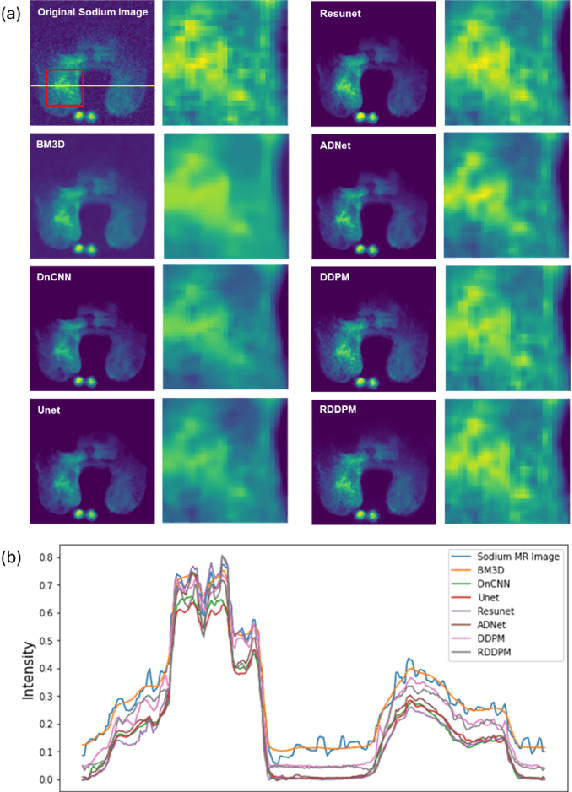
Abstract:Sodium MRI is an imaging technique used to visualize and quantify sodium concentrations in vivo, playing a role in many biological processes and potentially aiding in breast cancer characterization. Sodium MRI, however, suffers from inherently low signal-to-noise ratios (SNR) and spatial resolution, compared with conventional proton MRI. A deep-learning method, the Denoising Diffusion Probabilistic Models (DDPM), has demonstrated success across a wide range of denoising tasks, yet struggles with sodium MRI's unique noise profile, as DDPM primarily targets Gaussian noise. DDPM can distort features when applied to sodium MRI. This paper advances the DDPM by introducing the Rician Denoising Diffusion Probabilistic Models (RDDPM) for sodium MRI denoising. RDDPM converts Rician noise to Gaussian noise at each timestep during the denoising process. The model's performance is evaluated using three non-reference image quality assessment metrics, where RDDPM consistently outperforms DDPM and other CNN-based denoising methods.
A Deep-Learning-Based Label-free No-Reference Image Quality Assessment Metric: Application in Sodium MRI Denoising
Sep 02, 2024



Abstract:New multinuclear MRI techniques, such as sodium MRI, generally suffer from low image quality due to an inherently low signal. Postprocessing methods, such as image denoising, have been developed for image enhancement. However, the assessment of these enhanced images is challenging especially considering when there is a lack of high resolution and high signal images as reference, such as in sodium MRI. No-reference Image Quality Assessment (NR-IQA) metrics are approaches to solve this problem. Existing learning-based NR-IQA metrics rely on labels derived from subjective human opinions or metrics like Signal-to-Noise Ratio (SNR), which are either time-consuming or lack accurate ground truths, resulting in unreliable assessment. We note that deep learning (DL) models have a unique characteristic in that they are specialized to a characteristic training set, meaning that deviations between the input testing data from the training data will reduce prediction accuracy. Therefore, we propose a novel DL-based NR-IQA metric, the Model Specialization Metric (MSM), which does not depend on ground-truth images or labels. MSM measures the difference between the input image and the model's prediction for evaluating the quality of the input image. Experiments conducted on both simulated distorted proton T1-weighted MR images and denoised sodium MR images demonstrate that MSM exhibits a superior evaluation performance on various simulated noises and distortions. MSM also has a substantial agreement with the expert evaluations, achieving an averaged Cohen's Kappa coefficient of 0.6528, outperforming the existing NR-IQA metrics.
MammoDG: Generalisable Deep Learning Breaks the Limits of Cross-Domain Multi-Center Breast Cancer Screening
Aug 02, 2023



Abstract:Breast cancer is a major cause of cancer death among women, emphasising the importance of early detection for improved treatment outcomes and quality of life. Mammography, the primary diagnostic imaging test, poses challenges due to the high variability and patterns in mammograms. Double reading of mammograms is recommended in many screening programs to improve diagnostic accuracy but increases radiologists' workload. Researchers explore Machine Learning models to support expert decision-making. Stand-alone models have shown comparable or superior performance to radiologists, but some studies note decreased sensitivity with multiple datasets, indicating the need for high generalisation and robustness models. This work devises MammoDG, a novel deep-learning framework for generalisable and reliable analysis of cross-domain multi-center mammography data. MammoDG leverages multi-view mammograms and a novel contrastive mechanism to enhance generalisation capabilities. Extensive validation demonstrates MammoDG's superiority, highlighting the critical importance of domain generalisation for trustworthy mammography analysis in imaging protocol variations.
Beyond Fine-tuning: Classifying High Resolution Mammograms using Function-Preserving Transformations
Jan 20, 2021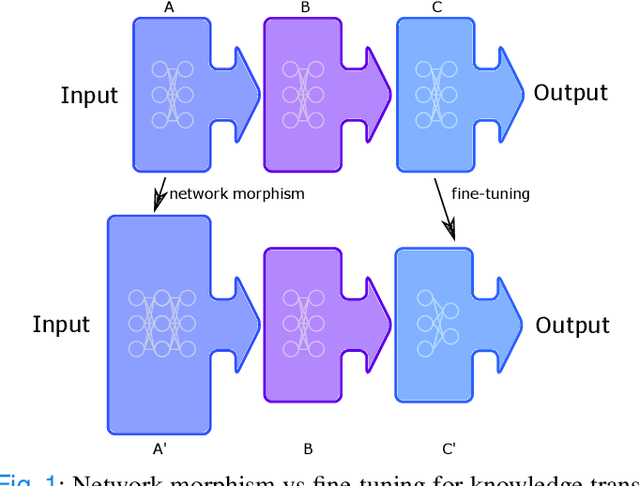
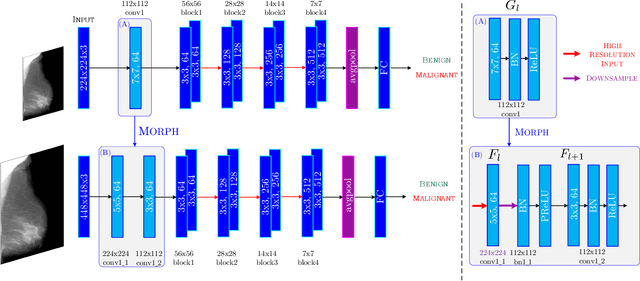
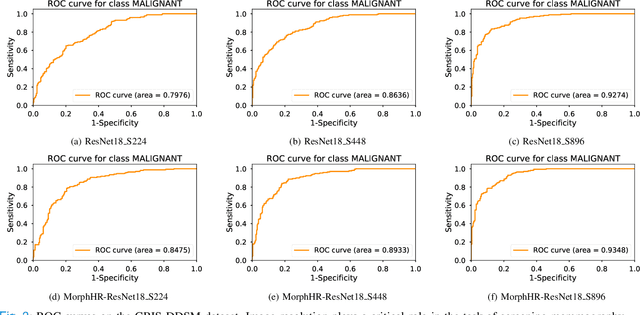
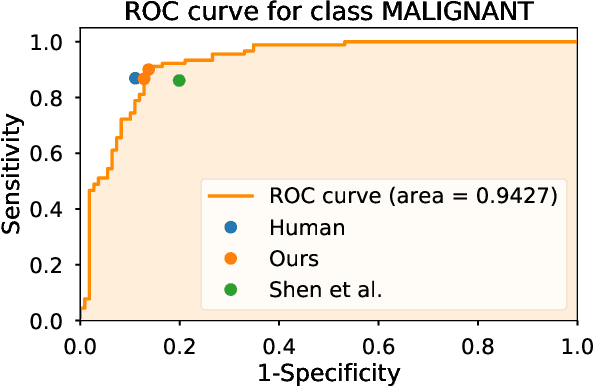
Abstract:The task of classifying mammograms is very challenging because the lesion is usually small in the high resolution image. The current state-of-the-art approaches for medical image classification rely on using the de-facto method for ConvNets - fine-tuning. However, there are fundamental differences between natural images and medical images, which based on existing evidence from the literature, limits the overall performance gain when designed with algorithmic approaches. In this paper, we propose to go beyond fine-tuning by introducing a novel framework called MorphHR, in which we highlight a new transfer learning scheme. The idea behind the proposed framework is to integrate function-preserving transformations, for any continuous non-linear activation neurons, to internally regularise the network for improving mammograms classification. The proposed solution offers two major advantages over the existing techniques. Firstly and unlike fine-tuning, the proposed approach allows for modifying not only the last few layers but also several of the first ones on a deep ConvNet. By doing this, we can design the network front to be suitable for learning domain specific features. Secondly, the proposed scheme is scalable to hardware. Therefore, one can fit high resolution images on standard GPU memory. We show that by using high resolution images, one prevents losing relevant information. We demonstrate, through numerical and visual experiments, that the proposed approach yields to a significant improvement in the classification performance over state-of-the-art techniques, and is indeed on a par with radiology experts. Moreover and for generalisation purposes, we show the effectiveness of the proposed learning scheme on another large dataset, the ChestX-ray14, surpassing current state-of-the-art techniques.
 Add to Chrome
Add to Chrome Add to Firefox
Add to Firefox Add to Edge
Add to Edge